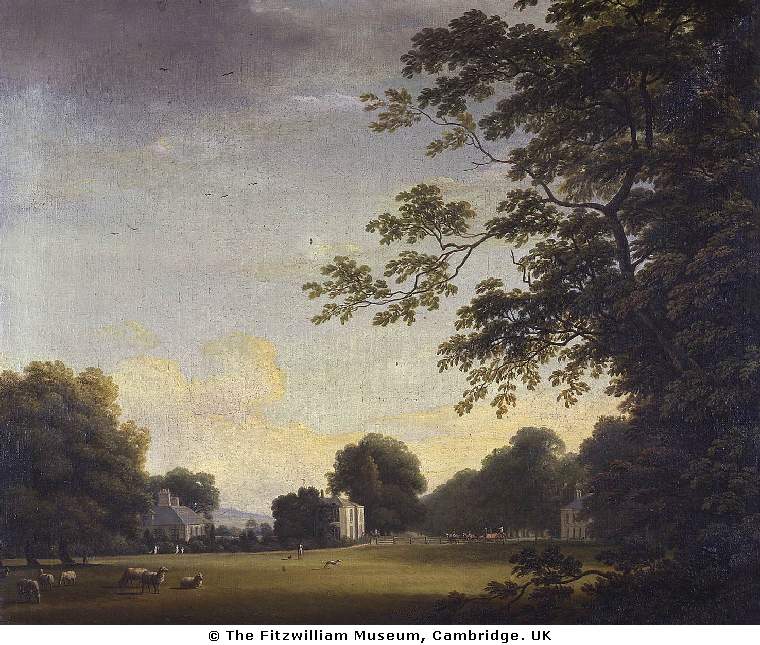
Mount Merrion House was built in 1711 as a new seat by the
5th Viscount Fitzwilliam
on the hill at Mount Merrion,
on the site of a small hunting lodge
[Mount Merrion 300],
with a
N avenue
and an
E avenue
leading to it.
The (now vanished)
main block
and the (surviving)
stables
were built in 1711.
They have the same late 17th century - early 18th century style.
And the
1711 stone
was on the RHS block of the stables.
[Ball, vol.2, 1903] says:
"In its style of architecture the original house resembled the existing stables,
which bear the date 1711".
1711 is about as old as a private house in Dublin will get.
The starting point for "ordinary" buildings in Ireland is
1691.
Due to the troubled state of the country,
there are very few unfortified buildings
in the whole of Ireland before that date.
The Lodge
has a different style,
and was built c.1727, by the
5th Viscount.
[Wilkinson, 1925]
describes Mount Merrion as a Georgian mansion built
"in 1727 or thereabouts as an addition to the existing stone hall".
Pat Sheridan
had heard that The Lodge
"was built originally as a ballroom".
The Fitzwilliam family left for England around 1726-27.
For the next 200 years various members of the Fitzwilliam-Herbert
family would live in
Mount Merrion at different times.
At other times it was
rented out.
The agent to the
6th Viscount
since at least 1749
[Pembroke Estate papers]
was Bryan Fagan of
Usher's Quay, Dublin.
The
6th Viscount
returned to live in Mount Merrion after 1756.
He landscaped
the Deer Park
behind it.
When Bryan Fagan died in Jan 1761, his widow
Elizabeth Fagan became agent for the 6th Viscount.
6th Viscount died at Mount Merrion 1776.
Elizabeth Fagan continued as agent to the
7th Viscount.
John FitzGibbon, 1st Earl of Clare
lived at Mount Merrion
1789 to 1793.
The
Prince of Wales
(future George IV)
was a guest of his there.
Elizabeth Fagan died Oct 1789,
on Usher's Island, Dublin.
[Walker's Hibernian Magazine, 1789, p.560]
describes her as
"many years agent to the late and present Lord Viscount Fitzwilliam".
After her death, her daughter Barbara Fagan [Catholic, born 1752]
was agent to the 7th Viscount.
Barbara Fagan married
Richard Verschoyle
[Protestant, born c.1751, son of Joseph Verschoyle of Donore, Co.Dublin].
See VERSCHOYLE
in [Burkes Irish, 1976].
Richard Verschoyle became joint agent with his wife.
After FitzGibbon left Mount Merrion in 1793,
Richard and Barbara Verschoyle
lived at
Mount Merrion.
Peter La Touche
lived at Mount Merrion 1802-06.
The landscape painter
William Ashford
made a number of
views of Mount Merrion
for the
7th Viscount
in around 1800 to 1806.
After La Touche left Mount Merrion in 1806,
Richard and Barbara Verschoyle again
lived at
Mount Merrion.
[Ball, vol.2, 1903]
says:
"the seat is still shown in Mount Merrion where that lady used to sit
and watch for her husband coming up the straight drive".
[Wilkinson, 1925]
says this was an outdoor seat, under the Obelisk in the Deer Park (which survived until 1960).
Barbara Verschoyle organised the
building of the new Catholic church at Booterstown
by the 7th Viscount 1812.
A plaque inside the church commemorates her
and the 7th Viscount.
Richard and Barbara Verschoyle were living at
Mount Merrion House as at 1816.
Sir Thomas Talbot Power, 6th Baronet
(born 1863, succ 1916)
lived at Mount Merrion around 1901.
He was of the Powers whiskey family.
He later lived Roebuck House, now in Leinster Lawn, Clonskeagh
(see street view).
His brother the 5th Baronet lived Leopardstown Park (now Leopardstown Park Hospital).
See
entry
for Mount Merrion House
in 1901 census.
18 windows in front of house. 30 rooms. 24 out-buildings.
Occupied by Thomas Talbot Power (not Baronet yet).
Sir Nevile Wilkinson
and his wife Lady Beatrix Herbert
lived in
Mount Merrion
1903 to 1914.
He planted on the lawn there cuttings from the
cedars of Lebanon
at the Herbert's ancestral home
Wilton House.
These do not survive.
See
entry
for Mount Merrion House
in 1911 census.
9 windows in front of house (perhaps only counted Lodge front). 23 rooms. 23 out-buildings.
The Wilkinson family
are away.
There are just two housemaids
in occupation.
Sir Nevile is
listed
in 1911 census
as visiting the
4th Marquess of Headfort
at Headfort Hall, Co.Meath.
His family must be in England.
Mount Merrion House itself was sold to the Catholic church 1935.
The Lodge
was converted for use as a Catholic church
for the new local population.
The new church in the Lodge was blessed by
Archbishop Byrne
on 17 May 1936.
It was
dedicated to St Therese of Lisieux.
The
main block
became a primary national school, opening Sept 1939
[Mount Merrion 300].
The Catholic parish of Mount Merrion and Kilmacud
split off from
Dundrum parish
29 April 1948.
The church in The Lodge
was replaced by the grand new Catholic church 1956.
Foundation stone of new church laid by
Archbishop McQuaid
on 28 June 1953.
New church
blessed and opened by
Archbishop McQuaid
on 19 February 1956.
The primary school in the main block was replaced
in Sept 1963 with a
new school
built beside the new church (see plaque on new school).
The parish of Mount Merrion
split off from Mount Merrion and Kilmacud
in 1964.
The RHS block (the N block) of
the stables
was used as a school room for children of the Pembroke estate
[O'Kelly, 1989],
[Mount Merrion 300],
[Harrington, 1981]
refers to this RHS block as "the former steward's quarters".
However there was a
Chief Steward's Lodge
some distance to the S of this.
[Cockburn and FitzGerald, 2000]
refers to it as "the barracks".
It was used for dances and parish events.
The RHS stable block (or just the upstairs room of it)
was known as "The Ballroom" in the 1930s-40s.
Pat Sheridan
says it was used as the parish hall,
and also for dances, in the 1950s.
Alan Donaldson
uses the name "The Old Barn"
for the 1950s dance venue in the RHS block.
David Neary in
[Mount Merrion 300]
calls it "The Barn".
Pat Sheridan
says the dance venue moved out of the RHS stable block to the Lodge (now no longer a church):
"In 1960 this old hall, built in 1711, was condemned and we moved across the car park
to what had been the old church, and was now known as the new hall."
The
main block
was used as the old scout hall before 1976.
In the 1970s it fell into disrepair.
It was demolished in the second half of 1976
[Cockburn and FitzGerald, 2000].
A new Community Centre was built on the site in late 1976.
It was officially opened by
Bishop James Kavanagh
on 15 Oct 1977
[Cockburn and FitzGerald, 2000].
The Lodge
was used for dances and parish events in the 1960s-70s.
It adopted the name
"The Barn" (or "The New Barn")
after dances moved over to it from the RHS stable block.
After the new Community Centre was built 1976,
the Lodge was less used.
It was used as a youth centre,
and became very run down in the 1990s.
It was nearly demolished, but was finally restored and re-opened in 2003
as part of the new community centre.
Opened by
President Mary McAleese
16 May 2003.
It was the centre for the
Mount Merrion 300
celebrations
in 2011.
Parts of the high old
demesne wall
survive around the housing estates.
The
Chief Steward's Lodge
survives, S of the house,
between The Rise and Trees Ave,
entrance off Trees Rd.

Mount Merrion House.
Street view showing the surviving building (The Lodge).
From the W (the park side).
Click to rotate.
From
Google Street View.
See street view
from the other side (the E avenue).
When the RHS block was demolished
and scout hall built 1976,
the stone was taken and built
into the new wall in front of the Community Centre.
In winter 2002-03
the stone was removed from the wall
and mounted above the
old (S) front door of the Lodge
(now a window)
as part of the restoration.
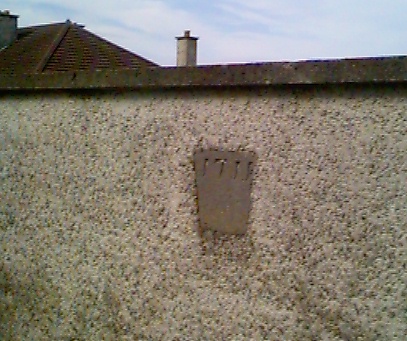
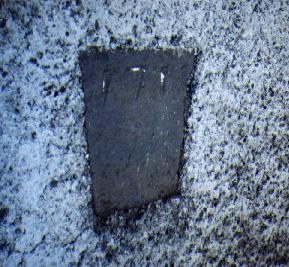
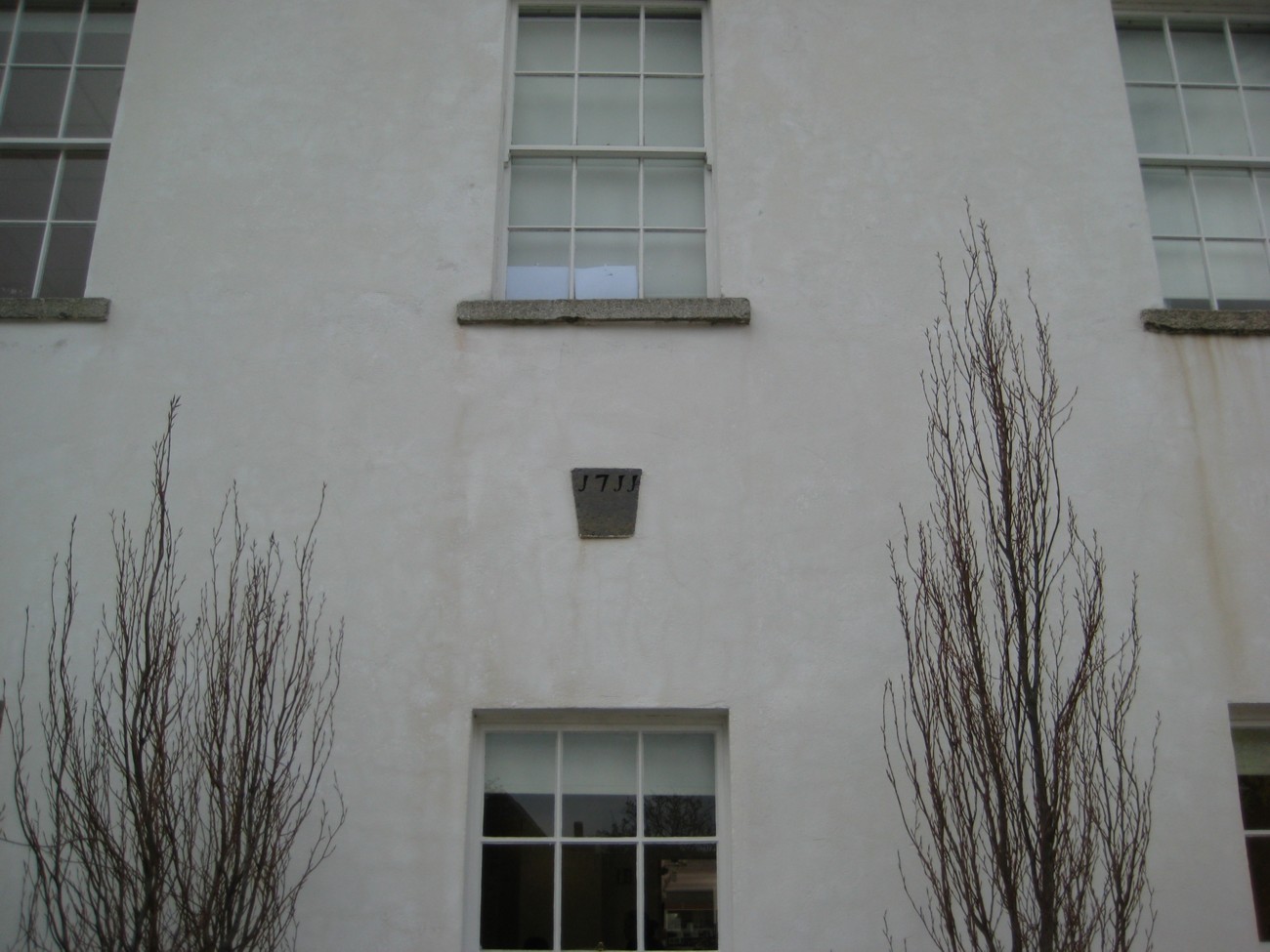
The 1711 stone now mounted in the wall of the Lodge.
Photo 2012.
See full size
and close-up.
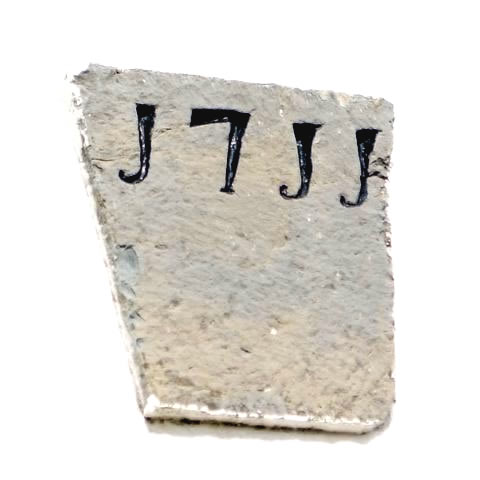
The 1711 stone.
From Mount Merrion 300.
Used with permission.
It was the childhood home of Mary Fitzwilliam, wife of the 9th Earl of Pembroke and ancestor of my wife and children. It was my English wife's most recent Irish ancestral home. Her ancestors lived in Ireland for centuries before leaving - from this house - around 1726-27.
It was demolished in 1976. How could something as beautiful as Mount Merrion House be demolished? The simple answer is that it was not seen as beautiful. Until the 1980s or so, buildings like this were regarded normally with indifference, and were at worst regarded as symbols of Anglo-Irish oppression.
The anonymous anti-British writer "Fear Cualann", in his [Angry article against the Fitzwilliams in 1925], expresses the unfortunately common contempt for Ireland's Anglo-Irish heritage after 1922 that led to so much of it being destroyed. About Mount Merrion House, he says: "Why, it was about the ugliest and mis-shapen lump of stone and mortar that ever was built by the Protestant landlords in Ireland: and that is saying a good deal, for they did construct hundreds of hideous structures. There is no pibroch note, no lament, in the Irish Times article, about the coming break-up, or throwing down, of that repulsive building. ... As for Mount Merrion, we welcome its disappearance and we rejoice over what will replace it".
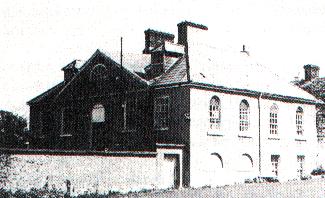
Please donate to support this site.
I have spent a great deal of time and money on this research.
Research involves travel and many expenses.
Some research "things to do"
are not done for years, because I do not have the money to do them.
Please Donate Here
to support the ongoing research and
to keep this website free.